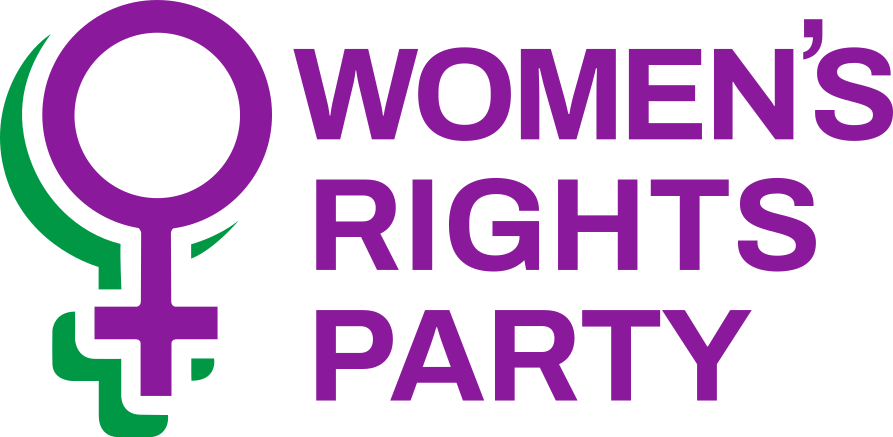Pay equity
Proposal
Under Women’s Incomes and Well Being, add to 2nd paragraph as follows:
Current policy: More than 50 years ago, union leader and former MP Sonya Davies championed the “Working Women’s Charter”. Much has yet to be achieved, including pay equity.
Add: Work typically done by women, particularly Māori, Pasifika and Asian women, continues to be undervalued, contributing to an on-going sex-based pay gap and sex/ethnicity pay gap.
The Women’s Right Party advocates for effective policies to deliver pay equity in private sector as well as public sector jobs, including a strong onus on employers, publication of average hourly pay statistics by occupation, sex and ethnicities, and legislative support for Fair Pay Agreements.
Rationale
Pay equity is about equal pay for work of equal value. In 2020 the Equal Pay Act was amended after the Court of Appeal found that the Equal Pay Act 1972 not only provided
for equal pay for men and women doing the same work, but also for women and men doing different work deemed to be of the same or similar value.
The so-called “gender pay gap” measures the difference between women’s and men’s earnings across different industries and organisations, including the Public Sector. In fact, the Equal Pay Act 1972 does not use the word “gender” but instead refers to “sex”.
The sex-based pay gap in Aotearoa New Zealand has reduced steadily from 16.3% in 1998, but has fluctuated over the past decade. It is currently 8.6%. 1 The pay gap for wāhine Māori, Pacific and Asian women is significantly higher than the overall gap.
Median hourly earnings for all women are currently $30.15 compared to $33.00 for all men (as at September 2023). European women had median hourly earnings of $31.50, but by comparison, Asian women earned $29.00, wāhine Māori earned $28.29, and Pacific women earned $28.00.
What causes the sex-based pay gap?
The causes of pay inequity are complex. A significant proportion of the pay gap (around 20%) is due to factors such as differences in education, the occupations and industries in which men and women worked, or the fact that women are more likely than men to work part-time. Much of the gender pay gap (around 80%) is considered to be due to harder to measure factors, like conscious and unconscious bias and differences in men’s and women’s choices and behaviours.
Behaviour, attitudes, and biases
Behaviour, attitudes, and biases are interrelated. There are still deeply held societal attitudes and beliefs about the types of work that are appropriate for men and women, the relative importance of occupations where men or women dominate, and the allocation of unpaid work, like caring for children and housework. These attitudes affect not only the choices men and women make around paid and unpaid work, but also the behaviours of others toward men and women who make choices that are not consistent with these traditional beliefs.
Bias makes it difficult for women to adapt and succeed in workplaces and by its nature it is difficult to detect, both by those who benefit and those who are disadvantaged. It
influences small day-to-day behaviours (like who is called on to offer an opinion or undertake challenging tasks, and whose contributions are positively acknowledged in meetings), as well as decisions on hiring, promotions and setting salaries. While discrimination is against the law, bias can affect decisions people make in ways that they’re not aware of.
Occupational segregation
“Occupational segregation” refers to the clustering of men and women workers in particular occupations, like cleaning, nursing, clerical work, and caring roles in the aged care and disability sectors. Occupational segregation can widen the sex-based pay gap, as women-dominated occupations tend to be lower paid than those dominated by men and there is a higher proportion of men in senior positions.
Pay equity claims use factors such as “knowledge and understanding”, “problem-solving”, “interpersonal skills”, “responsibility for services for people” and “emotional demands” when comparing work typically performed by women with work typically performed by men or historically performed by men. The factors have been designed to be free of assumptions based on sex roles and stereotypes.
Unpaid and caring work
Women and men have different patterns of participation in the paid workforce, principally because women spend a greater proportion of their time on unpaid and caring work than men. When women return to the paid workforce from career breaks, they often have trouble getting their careers back on track.
Although unpaid work makes an important contribution to the economy and plays a pivotal role in society and to individuals and communities, it is not visible, widely understood, or recognised, as ‘real’ work. All of this has a significant impact on women’s lifetime earnings and financial security and contributes to the gender pay gap widening.
Reducing inequitable pay
Given the range of causes, the solution to the sex-based pay gap requires sustained action over time from a range of participants, including workers and their employers,
careers advisers, business leaders, unions and government, and a change in societal attitudes and beliefs about women and men, and work.

